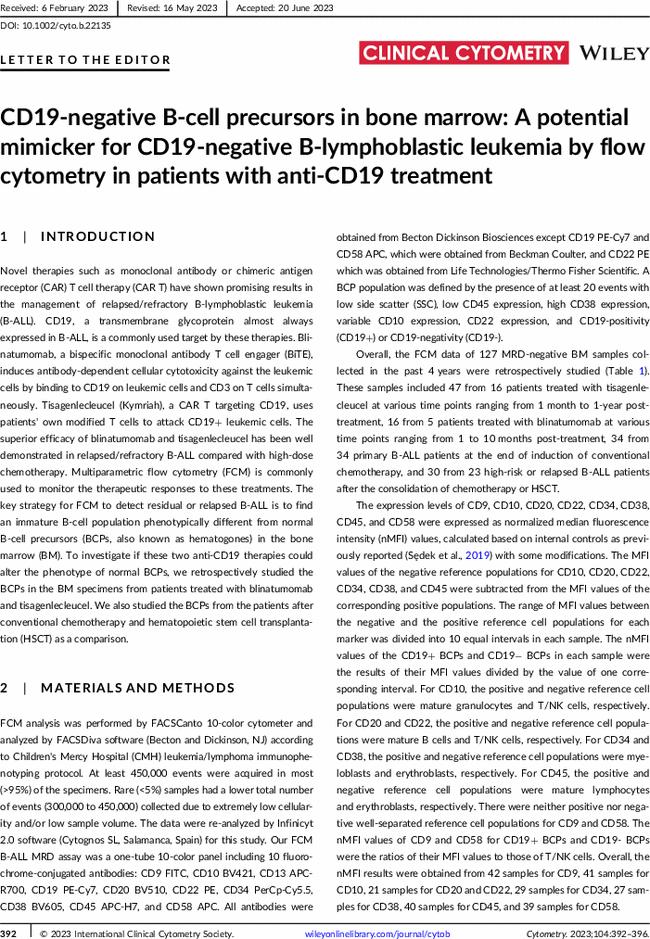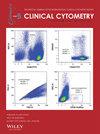CD19-negative B-cell precursors in bone marrow: A potential mimicker for CD19-negative B-lymphoblastic leukemia by flow cytometry in patients with anti-CD19 treatment
IF 2.3
3区 医学
Q3 MEDICAL LABORATORY TECHNOLOGY
引用次数: 1
Abstract
Novel therapies such as monoclonal antibody or chimeric antigen receptor (CAR) T cell therapy (CAR T) have shown promising results in the management of relapsed/refractory B-lymphoblastic leukemia (B-ALL). CD19, a transmembrane glycoprotein almost always expressed in B-ALL, is a commonly used target by these therapies. Blinatumomab, a bispecific monoclonal antibody T cell engager (BiTE), induces antibody-dependent cellular cytotoxicity against the leukemic cells by binding to CD19 on leukemic cells and CD3 on T cells simultaneously. Tisagenlecleucel (Kymriah), a CAR T targeting CD19, uses patients' own modified T cells to attack CD19+ leukemic cells. The superior efficacy of blinatumomab and tisagenlecleucel has been well demonstrated in relapsed/refractory B-ALL compared with high-dose chemotherapy. Multiparametric flow cytometry (FCM) is commonly used to monitor the therapeutic responses to these treatments. The key strategy for FCM to detect residual or relapsed B-ALL is to find an immature B-cell population phenotypically different from normal B-cell precursors (BCPs, also known as hematogones) in the bone marrow (BM). To investigate if these two anti-CD19 therapies could alter the phenotype of normal BCPs, we retrospectively studied the BCPs in the BM specimens from patients treated with blinatumomab and tisagenlecleucel. We also studied the BCPs from the patients after conventional chemotherapy and hematopoietic stem cell transplantation (HSCT) as a comparison.

骨髓中CD19阴性的B细胞前体:通过流式细胞术在抗CD19治疗患者中模拟CD19阴性B淋巴细胞白血病的潜在分子。
本文章由计算机程序翻译,如有差异,请以英文原文为准。
求助全文
约1分钟内获得全文
求助全文
来源期刊
CiteScore
6.80
自引率
32.40%
发文量
51
审稿时长
>12 weeks
期刊介绍:
Cytometry Part B: Clinical Cytometry features original research reports, in-depth reviews and special issues that directly relate to and palpably impact clinical flow, mass and image-based cytometry. These may include clinical and translational investigations important in the diagnostic, prognostic and therapeutic management of patients. Thus, we welcome research papers from various disciplines related [but not limited to] hematopathologists, hematologists, immunologists and cell biologists with clinically relevant and innovative studies investigating individual-cell analytics and/or separations. In addition to the types of papers indicated above, we also welcome Letters to the Editor, describing case reports or important medical or technical topics relevant to our readership without the length and depth of a full original report.

 求助内容:
求助内容: 应助结果提醒方式:
应助结果提醒方式:


